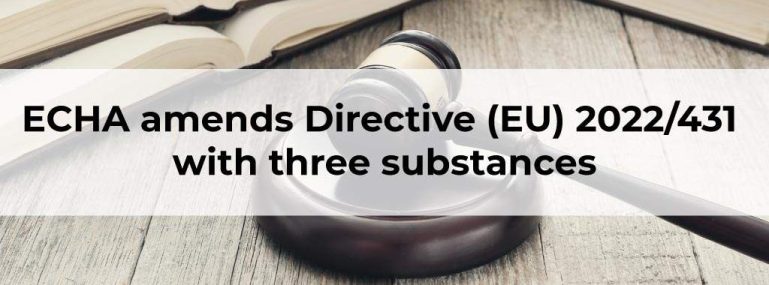On 16 March 2022, the EU Commission published Directive (EU) 2022/431. An announcement is made to amend Directive 2004/37/EC concerning the protection of workers against the risks associated with carcinogens and mutagens at the workplace. The Directive (EU) 2022/431 has been amended for the fourth time. The co-legislators signed the bill on March 9, 2022. ECHA’s Committee for Risk Assessment (RAC) evaluated three substances under the Carcinogens and Mutagens Directive (CMD) as part of a pilot project assessing occupational exposure limits for five substances in 2017-2018.
According to the fourth CMD amendment, the limit value for below three key carcinogens will be revised. There is a long-term limit and a short-term limit.
- Acrylonitrile: As a carcinogen, Acrylonitrile has been classified as Category 1B. Acrylonitrile is also capable of being absorbed through the skin. A short-term limit value of 4 mg/m3 (1,8 ppm) is introduced. In addition, there will be a transitional period of four years after the entry into force of the Directive from which the respective occupational exposure limit (OEL) values will apply.
- Nickel and its compounds: Compounds containing nickel are classified as carcinogens (category 1A). As a result, a limit value of 0.01 mg/m3 is introduced for the respirable fraction and a limit value of 0.05 mg/m3 for the inhalable fraction. For the inhalable fraction of nickel compounds, there should be a transitional period until 17 January 2025 inclusive, during which a limit value of 0,1 mg/m3 should be applied.
- Benzene: The carcinogenicity of benzene is classified in category 1A (carcinogenic). The limit value has been revised to 0,2 ppm (0,66 mg/m3). This Directive should therefore be implemented with a transitional period of four years following entry into force. During the transition period, the limit value of 1 ppm (3,25 mg/m3) provided for in Directive (EU) 2019/130 of the European Parliament and the Council should remain in place until 5 April 2024, and a transitional limit value of 0,5 ppm (1,65 mg/m3) should be in place from 5 April 2024 until 5 April 2026.
Additionally, it includes requirements for reprotoxic substances and hazardous medicinal products (HMPs).
A sufficient and appropriate amount of training is required for health care workers dealing with HMPs. According to the agreed text, the Commission will be requested to establish an indicative list of HMPs, as well as guidelines for their handling, particularly in hospitals, by the end of 2025.
Furthermore, the Commission must provide legislative proposals on occupational exposure limit values for 25 substances or groups of substances before the end of 2022. In addition, it must begin the process of lowering the occupational exposure limits for crystalline silica dust.
Directive (EU) 2022/431 must be implemented by member states within two years following adoption.





